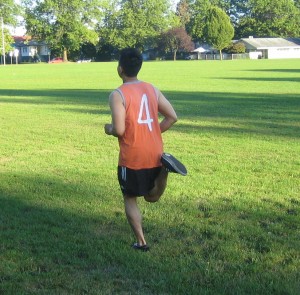Retrocalcaneal bursitis involves inflammation or infection of the bursae found at the back of the ankle by the heel as well as the large Achilles tendon that attaches the calf muscles to the heel bone. Bursae are sacs that are filled with fluids that function in cushioning and lubricating the joints and preventing the bones from damage including the ankles caused by friction. Repeated or overuse of the ankle causes the bursae to become irritated and inflamed such as walking for long periods of time, running long distances or jumping. Retrocalcaneal bursitis has similarity with Achilles tendinitis.
Causes
- Starting with a very intense and vigorous workout schedule
- Increasing the activity level without proper conditioning of the body.
Symptoms
- Pain that becomes severe when rising on the toes such as standing on tiptoes
- Pain can be felt in the heel, especially while walking, running and when the area is touched.
- The back of the heel becomes red and warm

Treatment
- Take the prescribed pain medications such as ibuprofen and naproxen to help lessen the pain and inflammation.
- Use an ice pack on the heel and ankle several times every day at least 15-20 minutes. Avoid prolong the application of the ice pack on the affected area since it can stop the blood circulation in the area.
- Perform mild exercises and stretches for the Achilles tendon such as water aerobics and swimming to minimize the pressure placed on the bursae found below the tendons.
- Wear heel wedges to lessen the stress placed on the heel which can also minimize pain and inflammation caused by the inflamed bursae.
- Place a cast on the affected ankle since it helps in minimizing the movement and allows the tendons to rest. When walking, wear walking boots since these helps in minimizing the movement of ankle and reduces the pressure placed on the inflamed bursae.
- Perform gradual progressive stretching of the Achilles tendon by standing in front of a wall. The affected foot is flat on the floor and then lean forward toward the wall until a stretch can be felt in the ipsilateral Achilles tendon. Remain in the position at least 20-60 seconds then relax. Perform the stretches with the knee extended and again with the knee is flexed. Perform the stretches several times every day. Take note that these stretches helps relieve impingement on the subtendinous bursae and avoid performing ballistic stretches such as sudden and jerky stretches.
- Wear an open-backed shoe in order to help relieve pressure placed on the affected area.
- Change running shoes regularly because the fit and support of the footwear changes over hundreds of miles of use.
- Avoid wearing footwear without laces and should fit closely to the heel. A heel cup can be inserted into the shoe to help raise the inflamed area slightly.
